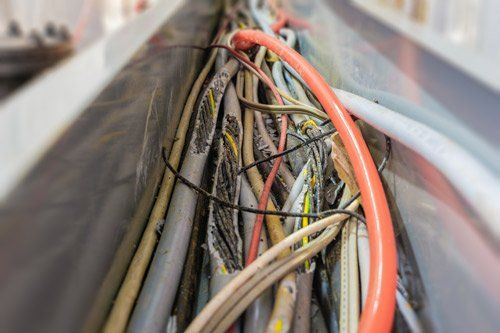3 Signs of Damaged Electrical Cords
Admin • February 27, 2019
Avoiding dangerous conditions is the easiest way to stay safe, which is why experts recommend checking the condition of electrical cordsand plugs before you use them to power appliances, power tools, or any other electronic device. However, it isn't always easy to spot damage, especially if you don't know the visible signs of trouble.
Here are how to identify three signs of damaged electrical cords and how checking before you use a device could save your life.
1. Missing Ground Prongs
If you have ever wondered why new outlets contain 3 holes while older versions only contain two, the answer lies in the concept of electrical grounding. In two-pronged outlets, the right hole holds the live prong, while the left hole is the neutral. This arrangement allows power to flow out of the outlet, through the device, and back to the outlet, where the power is dissipated back to the electrical grid.
Unfortunately, this older style outlet paved the way for electrical shock, since issues with appliances, such as loose wires, could allow the device to become electrically charged. To prevent this problem, three-pronged plugs and outlets were invented. In this setup, there is still a live and neutral terminal, but a ground plug connects to a grounded wire inside of the appliance, which is capable of interrupting the flow of power if the device develops problems.
To keep people safe, many high-wattage electrical devices have a protective ground prong on their plugs. However, since many older homes haven't been updated with three-pronged outlets, some homeowners clip the ground prong off with pliers to make it easier to use devices in their older home. This practice can be dangerous.
Before you use any electrical cord or appliance, check the plug carefully for any signs of damaged prongs. Make sure the ground prong is visible and damage free, and check for bent or damaged neutral and live prongs. If the cord has problems, ask a professional electrician to rewire the device with a new cord.
2. Cord Insulation Damage
Modern appliance and extension cords are coated with PVC, which is flame- and abrasion-resistant while remaining flexible. Because PVC is non-conductive, this protective insulation allows power to flow freely through the cord without heating the exterior or electrocuting the user.
Unfortunately, cord damage can happen fast and penetrate this protective barrier. Vacuums accidentally passed over cords can develop nicks in the cord, and cords run underneath carpets or rugs can be compressed, which also damages this insulation.
Even excessive use can be enough to damage cord insulation. If you use the same appliance or power cord repeatedly, common bends can cause cord fatigue, which damages the protective barrier.
When this insulation is damaged, it can allow people to come in direct contact with live wires, putting you at a higher risk for electrical shock or electrocution. Before you use any device, inspect the cord carefully for problems. While electrical tape can temporarily cover insulation damage, you should never use an appliance or cord where wire damage is visible.
3. Heat Damage
Unfortunately, cord damage isn't always immediately visible in the form of a missing plug or a cut section of insulation. When cords are compressed repeatedly by being walked over or smashed in cabinets or drawers, they can develop internal shorts, which can create arcs inside of the cord.
Because arcing electricity is incredibly warm, the cord can develop heat damage. Always inspect cords for sections of the plug or cord that appear melted, discolored, or warped in any way.
If you have appliances with damaged electrical cords or you are wondering about the safety of a device, our team is more than happy to help. Here at Express Electrical Service, we can help with everything from electrical installations and panel upgrades to appliance repairs and complete home rewiring. Give us a call any time of day for the urgent response you need to keep your home safe and functional.
Does your home fuse box need an upgrade? Read this blog to learn about six signs that indicate it’s time for an upgrade to protect your electrical system.
In this detailed article, we'll take a detailed look at some signs that your kitchen needs rewiring. Continue reading to find out more.
What types of electrical upgrades do you need to make before you list your home for sale? Take a look at the top electrical upgrades to consider.
There are several ways to protect your water mains and keep them in good condition. Discover three simple things you can start doing today.
Improving your office space is a great way to improve the workspace. Learn five critical services electricians offer during office remodeling projects.
A slab leak can cause more than just water damage to your home, especially in the summer. Read about the dangers of a slab leak by reviewing this blog.
As a property owner, you have certain responsibilities for the plumbing of your rental property. Learn professional tips by reading this blog.
Many homeowners have been bombarded with conflicting advice and outdated myths about plumbing. But no longer! Read our blog to learn about a few myths.
A major plumbing issue that constitutes an emergency is a water main break. Read this blog to learn about a main break’s causes, effects, and solutions.
You may be competent at fixing many home plumbing problems, but some issues require a professional hand. Here are 7 signs that indicate such a need.

